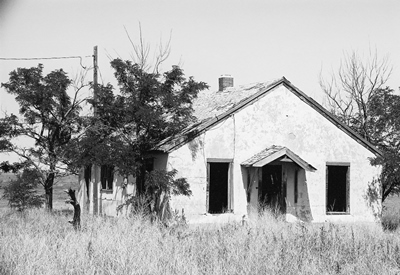
The first thing that strikes one about Pep, at least before visiting, is its name. It might seem a little unusual, except that there’s another town called Pep 60 miles dead east in Texas. In fact, it’s been said that Pep, New Mexico got its name directly from Pep, Texas. It’s also been said that Pep was named for a fortified breakfast cereal popular during the Depression. Neither of those stories is true though and, really, Pep was probably named for the reason you’d guess at first glance.
The place that would become Pep was settled in the fall of 1925 by Edward Cox, who established the first residence and store. T.M. Pearce, who wrote New Mexico Place Names, concluded that Pep got its name because Cox expected it to be a “lively and energetic place.” Apparently Pep was a word used often during the Depression to instill enthusiasm. That’s how Texas got its Pep, too.
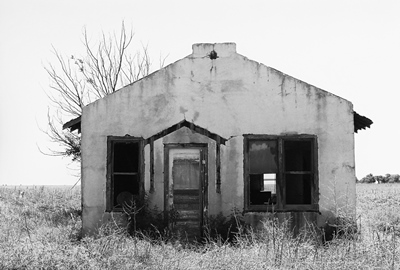
I’ve been told that there was a big party to get the town going, including a baseball game and rodeo. The post office opened in 1936--possibly beating Pep, TX to the name--and remains in operation to this day, despite the fact that there are only a handful of residents left. The post office also serves the ranches and farms of the surrounding area, of course, but is now only open in the morning and mail is not delivered every day.
Pep is in Roosevelt County, on the western edge of the legendary rangeland known as the Llano Estacado, or “Staked Plain.” I described the 30,000 sq. mi. Llano Estacado a bit in the last post when we explored nearby Causey. There’s a lot of folklore surrounding why this formidable mesa is known as the Staked Plain. The term is perhaps better translated as “Palisaded Plain,” the “palisaded” likely referring to the high, rocky escarpments that border the tableland, particularly to the east,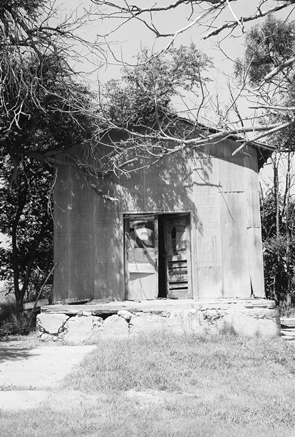 where one, the Caprock Escarpment, reaches 300 feet tall. A common but probably less accurate explanation is that the “stakes” are really the dried shoots of yuccas, which can rise a few feet above ground and thus appear as scattered stakes as you look out over the landscape. My favorite is that early settlers “staked” their trails with buffalo bones and skulls so that they could follow them back out if they got lost, like macabre bread crumbs. Recently the Hillsboro Historical Society told me that Robert Julyan believes “estacado” may be incorrect and that the original Spanish word could’ve been “estancada” or, “ponded.” Indeed, after a rainfall water collects in the small depressions across the plains and thus “Ponded Plain” might be fitting. Which is right? I’d do like everyone else does and just go with whatever you like best!
where one, the Caprock Escarpment, reaches 300 feet tall. A common but probably less accurate explanation is that the “stakes” are really the dried shoots of yuccas, which can rise a few feet above ground and thus appear as scattered stakes as you look out over the landscape. My favorite is that early settlers “staked” their trails with buffalo bones and skulls so that they could follow them back out if they got lost, like macabre bread crumbs. Recently the Hillsboro Historical Society told me that Robert Julyan believes “estacado” may be incorrect and that the original Spanish word could’ve been “estancada” or, “ponded.” Indeed, after a rainfall water collects in the small depressions across the plains and thus “Ponded Plain” might be fitting. Which is right? I’d do like everyone else does and just go with whatever you like best!
As for personages, science fiction author Jack Williamson was from Pep. Known as the “Dean of Science Fiction,” he published in every decade from the 1920’s to the 2000’s. He also built a little wooden cabin near his parent’s house so that he could write undistracted. I don’t know exactly where it is and I’ve heard it’s decaying…but still standing! I’d sure like to get a photo of it.
So why did Pep not live up to its name? Initially Cox, who owned all the land in town, may have tried to sell it at too high a price during a bad economic time for the country. Maybe it was the name in the first place; Pep, Texas has wound up in a similar state. But the record on Pep is spare, to say the least.
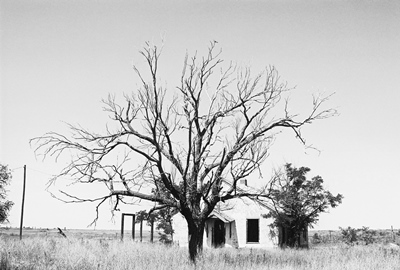
While it’s difficult to uncover the history of the little town, let alone the stories of the people that lived there, that does not make Pep unimportant. In fact, I would argue, quite the opposite. A couple months ago I posted a photo from Pep on the City of Dust Facebook page. After it had been shared around a bit, I found a comment which says more in a few words than I probably have in this whole piece. I don’t know the commenter, but I’d be happy if they somehow stumbled across this post so that I could give them my thanks for such a beautiful sentiment. Hopefully they wouldn’t mind that I’ve used their quote to end this latest installment!
“This post may be the only place in the entire world where the old community of Pep is being discussed. Pause for a moment, if you will, to honor those who gave their all here -- gambling on a new life -- in the Great American Desert.” G. L.
Information for this post came from almost nowhere. Robert Julyan provided the lion’s share in a single paragraph in The Place Names of New Mexico. I cobbled together some of the text on the Llano (or, yar-nah, if you like) from V.H. Whitlock’s book, Cowboy Life on the Llano Estacado. Various other bits were taken from personal correspondence and whatever else I could dig up. I learned a little bit about Pep, TX, the town from where F. Stanley published all those yellow “New Mexico Story” pamphlets, from THIS PAGE. Thanks again to G.L.
Now we’ll go a little bit west and somewhat more north to the also memorably-named town of House.
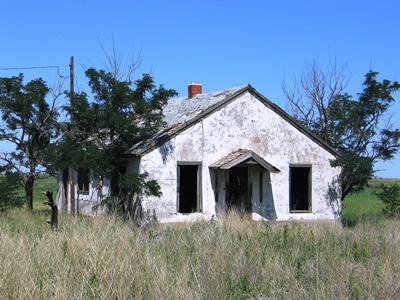
OCTOBER 2015 UPDATE: As of late September 2015, the entire town of Pep is up for sale. For somewhere around $300,000 you will get 318 acres, a (habitable) residence, a post office, and a community center, as well as everything shown in this post. Interested? Contact Wayne Baker at Master Realty in Portales, NM (575-356-6607). I was tempted to make an offer but my financial planner told me my portfolio is looking a little too thin right now.
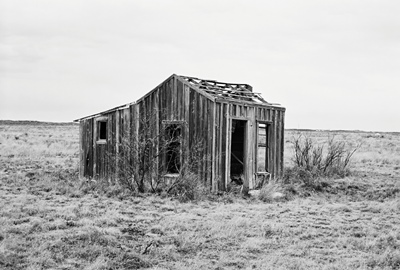
MARCH 2016 UPDATE: Well, I finally made it back to Pep to see Jack Williamson's writing shack, which he built with his own hands in the 1930's. There's even a small tub--more of a shallow metal box, really--inside so that he could bathe and continue writing with minimal interruption. I thank the Williamson family for graciously inviting me out to their ranch and also providing a wonderful lunch! I'm very grateful to have been able to photograph this important piece of New Mexico literary history.
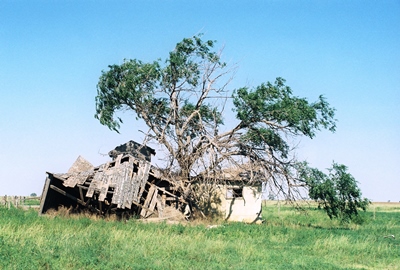
We’re about to start a run of posts featuring towns out on the eastern plains of New Mexico, some not far from the Texas state line. A few of these aren’t absolute ghost towns in the sense that the populations range from perhaps a couple individuals to around 70. But they’re all pretty obscure. So obscure, in fact, that in many cases all I can find on them, historically-speaking, is what Robert Julyan has to say in The Place Names of New Mexico. But, to me, these are fascinating, picturesque, and photogenic places, each persisting as best it can, whether populated or not, on the lonesome, windswept prairie.

Let’s start with Causey, New Mexico, located in Roosevelt County at the crossroads of NM 114 and 321, 35 miles southeast of Portales and about a mile from Texas. Despite some previous conjecture that the moniker was intended to flatter a railroad VP and get a line through Causey, it now seems agreed that the town was named for at least two of the Causey brothers, T.L. “George” and John. The brothers were buffalo hunters, working in the southeastern part of the state and George, in particular, established a reputation for being one of the most successful in the history of the American West. Estimates by outside observers put the number of buffalo he personally killed at around 40,000. One of George’s hunting companions, George Jefferson, known as “Old Jeff,” said “Causey killed more buffaloes in one winter…than Buffalo Bill Cody killed in his entire lifetime.”
The problem with shooting that many buffalo is that eventually you run out. Of course, that’s how it went and, after hunting through the 1870’s, by 1882 Causey had shot the last of the wild buffalo on what is known as the Llano Estacado, or “Staked Plain,” of eastern New Mexico.

While George Causey generally operated to the south, the town of Causey is on the west central part of the Llano Estacado, one of the largest tablelands in North America, the majority of which is in northwest Texas. Coronado had this to say upon stumbling onto the Llano in 1541:
"I reached some plains so vast, that I did not find their limit anywhere I went, although I traveled over them for more than 300 leagues...with no more land marks than if we had been swallowed up by the sea...there was not a stone, nor bit of rising ground, nor a tree, nor a shrub, nor anything to go by."
To translate for those of us no longer using leagues, Coronado covered more than 1000 miles.
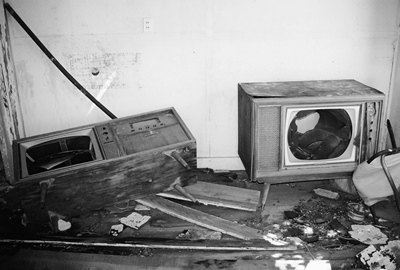
Thus turning to ranching on the Llano, George Causey established himself south of Lovington, maybe 60 miles from present-day Causey. Mr. Causey promoted the suitability of eastern New Mexico for ranching and farming and, as one of the earliest settlers in the area, opened it up for those who followed, not least by being the first to discover the rich supply of groundwater in the region.
In 1902, Causey was thrown from a horse during a mustang round-up, badly injuring his spine. After traveling all over the country depleting his finances in a failed effort to find medical relief for his severe headaches, and increasingly disenchanted with the rapidly changing West, Causey sold his ranch to pay off debt, married his nurse, and moved near Kenna, 30 miles southwest of the town that bears his family name. He shot himself in his bed on May 19, 1903, his body discovered by his nephews, Vivian and Ralph, who’d heard the report of their uncle's gun. I don’t know if the town of Causey had been established by that time or not; the post office didn't open until 1907.

The earliest date I can put on Causey is 1907, when the post office opened. It remains operational to this day. The townsite was actually moved by Ezra Ball sometime after WWI and is now three miles north of where it was first established. These days you will find some well-kept homes and a few residents. The population as of the 2000 census was 52 and I imagine that’s decreased a little. There is also the ruin of a massive WPA-built school which is collapsing and disappearing into the overgrowth. It was surprising to me that such a large school existed in Causey, but F. Stanley reported in “The Causey (New Mexico) Story,” published in 1966, that there were at least 150 students attending the school in 1942. That's more than I would've guessed. Here’s a taste of how things were back then:
"The Causey school has over fifty in high school and over one hundred in grade school, Supt. L. E. O'Hare stated last weekend. The attendance has been good. The school board has not decided when it will dismiss school for crop gathering, but Supt. O'Hare is of the opinion it will be about the first of next month. There have been no resignations of teachers so far." (Sept. 7, 1942) The school is pictured below.
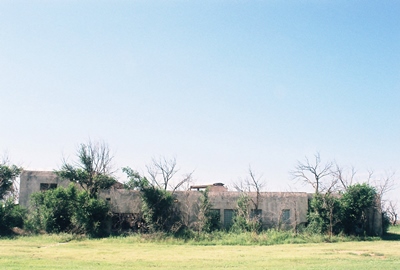
Also, in 1960, the senior class was said to have visited the "Insane Asylum" in Las Vegas, NM as part of a long field trip. I wonder if the kids lobbied to put that on the itinerary.
Stanley himself said of Causey that, “The most surprising thing is the school system and the fire house, worthy of larger cities.” He went on: “Time is unimportant to the teachers. They give so much of it to the school. Many a trip took me through Causey and teachers would be noted at their desks far into the night. There may be a thousand reasons for this; there may be none save that they love their work.”
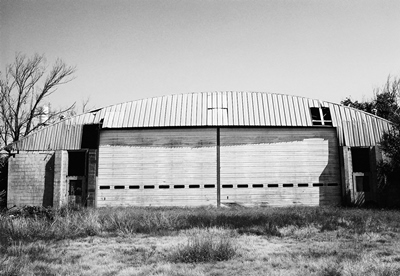
Next to the school is a massive metal, armory-like structure with a caved-in roof. I've heard this was the school gymnasium and also held the agricultural shops. Someone else told me they’d played basketball inside the school, which would indicate the gym was there. Heck, maybe there were gyms in both places. (UPDATE: There were two gyms! I've been told the bigger was the "New Gym," probably built in the mid-to-late 1960's. However, it may not have been used as such for long because the school closed sometime in 1970-1971.) Inside the armory were a couple bedraggled pick-up trucks and the first abandoned semi tractor I’ve ever seen, now crushed under the huge roof.
F. Stanley noted in 1966 that, “Causey had a long, hard road to travel, but it has made the grade and the future looks good.” It is referred to as “one of the business centers of Roosevelt County,” with a population of 234 as early as 1920. Like so many small towns, the future Stanley spoke of appears to have, in the end, been at least as hard as the past.

Information for this post came from the aforementioned The Place Names of New Mexico, as well as F. Stanley’s long out of print “The Causey (New Mexico) Story.” Some biographical information on George Causey can be found at the Texas State Historical Society. Wikipedia will give you demographics. If you get really into George Causey and the Llano, you will want to read Cowboy Life on the Llano Estacado, written by his nephew, V. H. Whitlock aka Ol’ Waddy. Roosevelt County History and Heritage, by Jean M. Burroughs, wife of former NM governor John Burroughs, documents the county, but doesn’t say a whole lot about Causey.
Next time…Pep, NM!



 where one, the Caprock Escarpment, reaches 300 feet tall. A common but probably less accurate explanation is that the “stakes” are really the dried shoots of yuccas, which can rise a few feet above ground and thus appear as scattered stakes as you look out over the landscape. My favorite is that early settlers “staked” their trails with buffalo bones and skulls so that they could follow them back out if they got lost, like macabre bread crumbs. Recently the Hillsboro Historical Society told me that Robert Julyan believes “estacado” may be incorrect and that the original Spanish word could’ve been “estancada” or, “ponded.” Indeed, after a rainfall water collects in the small depressions across the plains and thus “Ponded Plain” might be fitting. Which is right? I’d do like everyone else does and just go with whatever you like best!
where one, the Caprock Escarpment, reaches 300 feet tall. A common but probably less accurate explanation is that the “stakes” are really the dried shoots of yuccas, which can rise a few feet above ground and thus appear as scattered stakes as you look out over the landscape. My favorite is that early settlers “staked” their trails with buffalo bones and skulls so that they could follow them back out if they got lost, like macabre bread crumbs. Recently the Hillsboro Historical Society told me that Robert Julyan believes “estacado” may be incorrect and that the original Spanish word could’ve been “estancada” or, “ponded.” Indeed, after a rainfall water collects in the small depressions across the plains and thus “Ponded Plain” might be fitting. Which is right? I’d do like everyone else does and just go with whatever you like best!









